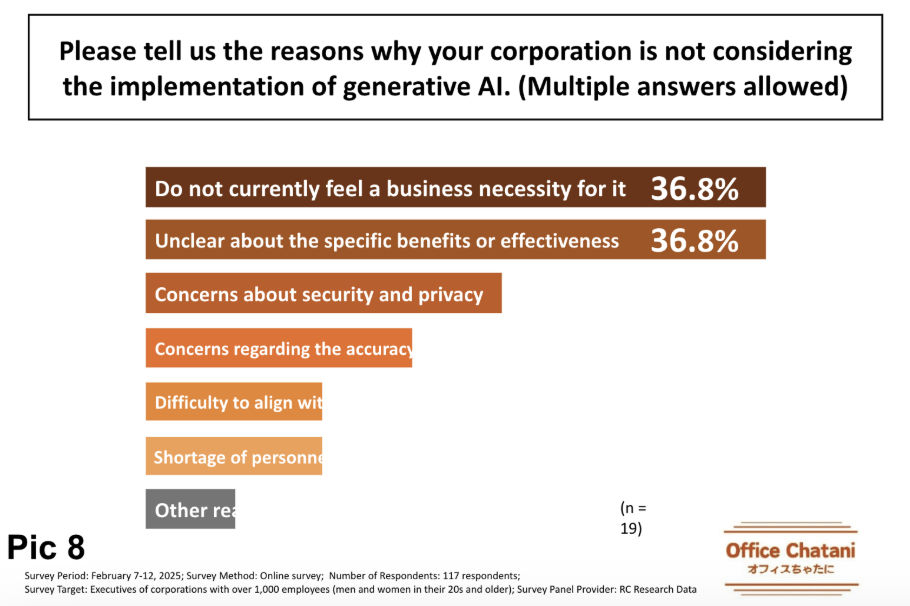
New survey reveals 'certain degree of correlation' between executives' understanding of AI and its implementation

Executives who understand generative AI are significantly more likely to adopt or consider adopting the technology within their organisations, according to a new report.
Office Chatani recently surveyed 117 executives from companies with over 1,000 employees in Japan to determine the correlation between genAI understanding and implementation in workplaces.
"A certain degree of correlation was observed between executives' level of understanding of generative AI and the actual state of its implementation in their business operations," said Office Chatani in its media release.
It found that 53% of executives surveyed are already implementing genAI within their organisations. Among them, the majority said they have some understanding of the technology:
Another 30.8% of the respondents said they are considering the implementation of AI tools in their workplace. Their understanding of genAI tools is as follows:
Meanwhile, the remaining 16.2% of executives who have no plans to implement AI are most likely to have little or no understanding of the technology, according to the report.
The findings come after findings from the Microsoft and LinkedIn's 2024 Microsoft Work Trend Index that showed only 32% of employees in Japan are utilising AI at work.
This is far behind the 83% utilisation rate in the Asia-Pacific region, and the 75% utilisation rate across the world.
According to Office Chatani, one of the key factors behind the lag in AI implementation in Japan is the level of understanding among executives who have final decision-making authority.
In fact, its own survey found that 36.8% of executives who have no plans to implement AI said it's because they're unclear about the specific benefits or effectiveness of the technology.

It also found that active promotion of AI implementation by the executives is cited as one of the most important factors in successful genAI implementation.
Proactive utilisation by business departments and frontline teams (19.4%) is also another important factor in introducing it at work.
